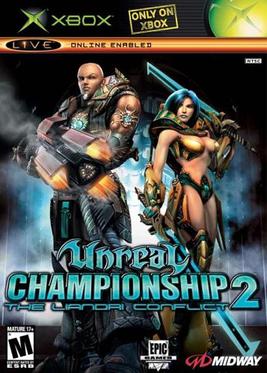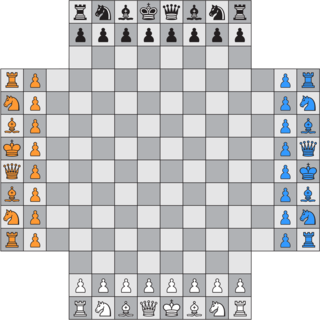
Dodgeball is a team sport in which players on two opposing teams try to throw balls and hit opponents while avoiding being hit themselves. The objective of each team is to eliminate all members of the opposing team by hitting them with thrown balls, catching a ball thrown by an opponent, or inducing an opponent to commit a violation, such as stepping outside the court.

Tag is a playground game involving one or more players chasing other players in an attempt to "tag" and mark them out of play, typically by touching with a hand. There are many variations; most forms have no teams, scores, or equipment. Usually when a person is tagged, the tagger says, "It!" or "Tag, you're 'It'!" The last one tagged during tag is "It" for the next round. The game is known by other names in various parts of the world, including "running and catching" in India and "catch and cook" in the Middle East.

Shuffleboard is a game in which players use cues to push weighted discs, sending them gliding down a narrow court, with the purpose of having them come to rest within a marked scoring area. As a more generic term, it refers to the family of shuffleboard-variant games as a whole.

Unreal Championship 2: The Liandri Conflict is a first- and third-person arena shooter video game developed by Epic Games and published by Midway Games. It was released in April 2005 for Xbox. The game is part of the Unreal franchise, and is a direct sequel to 2002's Unreal Championship. Unreal Championship 2 was designed from the ground up to take full advantage of the Xbox Live gaming service.

Sixty-six or 66, sometimes known as Paderbörnern, is a fast 5- or 6-card point-trick game of the marriage type for 2–4 players, played with 24 cards. It is an ace–ten game where aces are high and tens rank second. It has been described as "one of the best two-handers ever devised".

Star Fox: Assault is a 3D scrolling shooter and third-person shooter video game developed by Namco and published by Nintendo for the GameCube. It is the fourth released title in the Star Fox series. The game was released on 15 February 2005 in North America, on 24 February 2005 in Japan, on 29 April 2005 in Europe, and on 16 June 2005 in Australia.

King of Kings (キングオブキングス) is a turn-based strategy video game with wargaming elements for the Family Computer, released only in Japan. Kazuma Kaneko helped to design the characters for this video game; which became the inspiration for the characters in the video game Megami Tensei.

Four-player chess is a family of chess variants played with four people. The game features a special board typically made of a standard 8×8 square, with 3 rows of 8 cells each extending from each side, and requires two sets of differently colored pieces. The rules are similar to, but not the same as, regular chess. There are a variety of different rule variations; most variations, however, share a somewhat similar board and piece setup.

Double Dribble is an arcade basketball video game developed and released by Konami in 1986. It was the second basketball arcade video game by Konami, following Super Basketball. It was considered the most realistic basketball sports video game upon release, with fast-paced action, detailed players, a large side-scrolling court, innovative cinematic slam dunks, and detailed sound effects, beginning a trend where presentation would play an increasingly important role in sports games.

Teenage Mutant Ninja Turtles: Tournament Fighters, or Teenage Mutant Hero Turtles: Tournament Fighters in Europe, is the title of three different fighting games based on the Teenage Mutant Ninja Turtles, produced by Konami for the Nintendo Entertainment System, Sega Genesis, and Super NES and released during a period between 1993 and 1994. Konami produced a different fighting game based on the franchise each featuring a differing cast of characters for the platforms. All three versions of the game were re-released as part of Teenage Mutant Ninja Turtles: The Cowabunga Collection in 2022. with online play using rollback netcode for the SNES version of the game.

Fatal Fury: King of Fighters, known as Garō Densetsu: Shukumei no Tatakai in Japan, is a 1991 head-to-head fighting game released by SNK for the Neo Geo arcade and home platforms. Fatal Fury was SNK's first fighting game for the Neo Geo system and served as the inaugural game in their Fatal Fury series, as well as the first game to depict the fictional "King of Fighters" tournament, which became the basis for the later The King of Fighters games.

ECW Anarchy Rulz is a professional wrestling video game released by Acclaim Entertainment in 2000 based on Extreme Championship Wrestling (ECW). It was released for the PlayStation and Dreamcast. The last ECW game released, Anarchy Rulz is the sequel to ECW Hardcore Revolution, which was released earlier in the year. Acclaim would later start another wrestling game series with the release of Legends of Wrestling in December 2001.
Soulcalibur is a weapon-based fighting game franchise developed by Bandai Namco Studios and published by Bandai Namco Entertainment.

Real World/Road Rules Challenge: The Gauntlet III is the 15th season of the MTV reality game show, The Challenge.

WWE SmackDown vs. Raw 2009 is a professional wrestling video game developed by Yuke's and published by THQ for the PlayStation 3, PlayStation 2, PlayStation Portable, Wii, and Xbox 360 video game consoles, with TOSE overseeing development for the Nintendo DS version. The game was first released on November 9, 2008, in North America. It is the tenth overall installment in the video game series based on the World Wrestling Entertainment (WWE) promotion, and the fifth game under the SmackDown vs. Raw name, named after the promotion's Raw and SmackDown brands. It is the sequel to 2007's SmackDown vs. Raw 2008 and the second game to feature the promotion's ECW brand.

Alfa Romeo Racing Italiano, known in Europe as SCAR - Squadra Corse Alfa Romeo, is a racing video game for the PlayStation 2, Windows and Xbox. It was developed by Milestone srl and released in 2005.

Smokin' Guns is a first-person shooter video game. Smokin' Guns is intended to be a semi-realistic simulation of the American Old West's atmosphere. Gameplay as well as locations are inspired by Western movies, particularly those from the Spaghetti Western genre.
This is a non-comprehensive list that includes terms used in video games and the video game industry, as well as slang used by players.
















